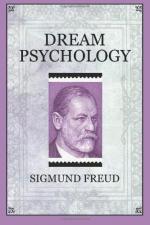If we assume that the same need for the transference of the repressed ideas which we have learned to know from the analysis of the neuroses makes its influence felt in the dream as well, we can at once explain two riddles of the dream, viz. that every dream analysis shows an interweaving of a recent impression, and that this recent element is frequently of the most indifferent character. We may add what we have already learned elsewhere, that these recent and indifferent elements come so frequently into the dream content as a substitute for the most deep-lying of the dream thoughts, for the further reason that they have least to fear from the resisting censor. But while this freedom from censorship explains only the preference for trivial elements, the constant presence of recent elements points to the fact that there is a need for transference. Both groups of impressions satisfy the demand of the repression for material still free from associations, the indifferent ones because they have offered no inducement for extensive associations, and the recent ones because they have had insufficient time to form such associations.
We thus see that the day remnants, among which we may now include the indifferent impressions when they participate in the dream formation, not only borrow from the Unc. the motive power at the disposal of the repressed wish, but also offer to the unconscious something indispensable, namely, the attachment necessary to the transference. If we here attempted to penetrate more deeply into the psychic processes, we should first have to throw more light on the play of emotions between the foreconscious and the unconscious, to which, indeed, we are urged by the study of the psychoneuroses, whereas the dream itself offers no assistance in this respect.
Just one further remark about the day remnants. There is no doubt that they are the actual disturbers of sleep, and not the dream, which, on the contrary, strives to guard sleep. But we shall return to this point later.




